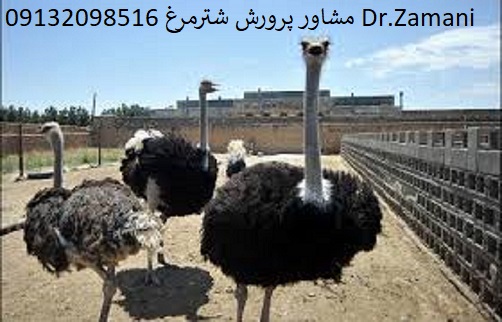سازش پزیری شترمرغ
Adaptation of the ostrich
The ostrich is very adaptable and thrives under extreme conditions. Among the many ways of regulating its body temperature, it controls heat loss during cold weather by covering its thighs with its wings, and during hot weather, by lifting and moving its wings, it creates a gentle breeze. The feathers are excellent insulators, minimizing heat gain from direct solar radiation, as well as reducing heat loss during cold desert nights.
It has a remarkable tolerance to heat, withstanding air temperatures of 56C without undue stress. Heat is lost by panting via the well-developed air sac system that avoids overventilation of the lungs and consequent dangerous water loss (Jones, 1982). Adaptations of the blood circulatory system permit its body to heat up to a greater extent than those of other warm-blooded animals while still keeping the head at a safe temperature (Crawford and Schmidt-Nielsen, 1967). Ostriches rarely seek shade, as most desert animals regularly do. Furthermore, the ostrich's urine contains uric acid carried in a mucus-like substance that helps to minimize water loss (Levy et al., 1990; Yagil et al., 1990).
keeping the head at a safe temperature (Crawford and Schmidt-Nielsen, 1967). Ostriches rarely seek shade, as most desert animals regularly do. Furthermore, the ostrich's urine contains uric acid carried in a mucus-like substance that helps to minimize water loss (Levy et al., 1990; Yagil et al., 1990).
Ostriches may be found in a variety of open habitats. They normally avoid areas of thick bush or heavy tree cover, and inhabit wooded grasslands and other open country. Semi-arid, open and short-grass plains are usually associated with the highest ostrich densities. They are also able to thrive in very poorly vegetated areas.
tell.09132098516
dr.zamani
ostrich manager
دکتر اکبر زمانی
متخصص پرورش شترمرغ
09132098516
Akbarzamani.ir
درباره این سایت